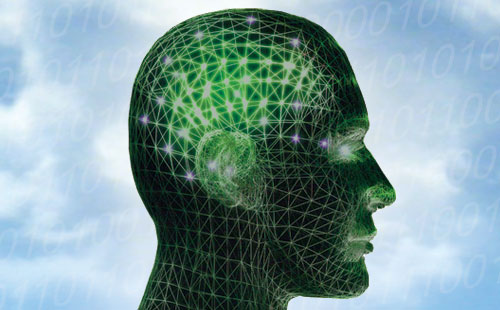It’s a trivial matter to send a message to someone halfway around the world these days, but just imagine trying to do it without speaking or writing. That is just what an international team of neuroscientists and robotics engineers recently achieved in an experiment that successfully transmitted a message directly — and noninvasively — from the brain of one person to that of another some 5,000 miles away.
“We wanted to find out if one could communicate directly between two people by reading out the brain activity from one person and injecting brain activity into the second person, and do so across great physical distances by leveraging existing communication pathways,” said Alvaro Pascual-Leone, director of the Berenson-Allen Center for Noninvasive Brain Stimulation at Beth Israel Deaconess Medical Center and professor of neurology at Harvard Medical School.
To demonstrate “the neuroscientific equivalent of instant messaging,” Pascual-Leone’s team sent the words “hola” and “ciao” in a computer-mediated transmission from the brain of a person in India to that of one in France. They employed Internet-linked electroencephalogram (EEG) and robot-assisted and image-guided transcranial magnetic stimulation (TMS) technologies.

Their experiment is detailed in a research paper published last month in PLOS ONE.
Flashes of Light
Four people participated as subjects in the study: One was assigned to a brain-computer interface and was the sender of the words; the other three were assigned to the computer-brain interface and received the messages.
Using EEG, the research team first translated the greetings “hola” and “ciao” into binary code and then emailed the results from India to France.
A computer-brain interface there then transmitted the message to the receivers’ brains through noninvasive brain stimulation, causing the subjects to experience what are known as “phosphenes,” or flashes of light in their peripheral vision. That light appeared in numerical sequences that enabled the receivers to decode the information in the message.

A Conscious Process
“TMS-induced phosphenes have their advantages and disadvantages, and other modalities may turn out to be better in the end,” said Giulio Ruffini, CEO of Starlab and a coauthor of the study.






















































